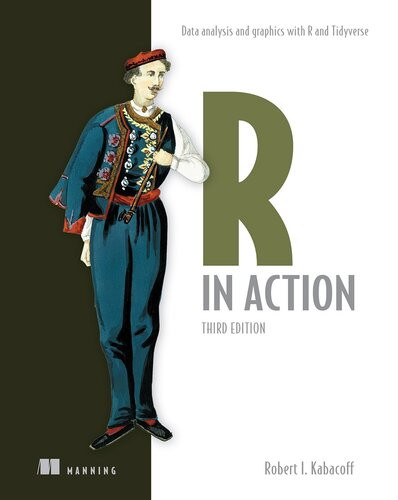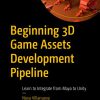R in Action 3rd Edition by Robert Kabacoff ISBN 9781638357018 1638357013
$50.00 Original price was: $50.00.$25.00Current price is: $25.00.
R in Action 3rd Edition by Robert Kabacoff – Ebook PDF Instant Download/Delivery: 9781638357018, 1638357013
Instant download Full Chapter of R in Action 3rd Edition after payment

Product details:
ISBN 10: 1638357013
ISBN 13: 9781638357018
Author: Robert I. Kabacoff
R is the most powerful tool you can use for statistical analysis. This definitive guide smooths R’s steep learning curve with practical solutions and real-world applications for commercial environments.
In R in Action, Third Edition you will learn how to:
Set up and install R and RStudio
Clean, manage, and analyze data with R
Use the ggplot2 package for graphs and visualizations
Solve data management problems using R functions
Fit and interpret regression models
Test hypotheses and estimate confidence
Simplify complex multivariate data with principal components and exploratory factor analysis
Make predictions using time series forecasting
Create dynamic reports and stunning visualizations
Techniques for debugging programs and creating packages
R in Action, Third Edition makes learning R quick and easy. That’s why thousands of data scientists have chosen this guide to help them master the powerful language. Far from being a dry academic tome, every example you’ll encounter in this book is relevant to scientific and business developers, and helps you solve common data challenges. R expert Rob Kabacoff takes you on a crash course in statistics, from dealing with messy and incomplete data to creating stunning visualizations. This revised and expanded third edition contains fresh coverage of the new tidyverse approach to data analysis and R’s state-of-the-art graphing capabilities with the ggplot2 package.
Purchase of the print book includes a free eBook in PDF, Kindle, and ePub formats from Manning Publications.
About the technology
Used daily by data scientists, researchers, and quants of all types, R is the gold standard for statistical data analysis. This free and open source language includes packages for everything from advanced data visualization to deep learning. Instantly comfortable for mathematically minded users, R easily handles practical problems without forcing you to think like a software engineer.
About the book
R in Action, Third Edition teaches you how to do statistical analysis and data visualization using R and its popular tidyverse packages. In it, you’ll investigate real-world data challenges, including forecasting, data mining, and dynamic report writing. This revised third edition adds new coverage for graphing with ggplot2, along with examples for machine learning topics like clustering, classification, and time series analysis.
What’s inside
Clean, manage, and analyze data
Use the ggplot2 package for graphs and visualizations
Techniques for debugging programs and creating packages
A complete learning resource for R and tidyverse
About the reader
Requires basic math and statistics. No prior experience with R needed.
About the author
Dr. Robert I Kabacoff is a professor of quantitative analytics at Wesleyan University and a seasoned data scientist with more than 20 years of experience.
Table of contents:
Part 1. Getting started
1 Introduction to R
- 1.1 Why use R?
- 1.2 Obtaining and installing R
- 1.3 Working with R
- 1.4 Packages
- 1.5 Using output as input: Reusing results
- 1.6 Working with large datasets
- 1.7 Working through an example
2 Creating a dataset
- 2.1 Understanding datasets
- 2.2 Data structures
- 2.3 Data input
- 2.4 Annotating datasets
- 2.5 Useful functions for working with data objects
3 Basic data management
- 3.1 A working example
- 3.2 Creating new variables
- 3.3 Recoding variables
- 3.4 Renaming variables
- 3.5 Missing values
- 3.6 Date values
- 3.7 Type conversions
- 3.8 Sorting data
- 3.9 Merging datasets
- 3.10 Subsetting datasets
- 3.11 Using dplyr to manipulate data frames
- 3.12 Using SQL statements to manipulate data frames
4 Getting started with graphs
- 4.1 Creating a graph with ggplot2
- 4.2 ggplot2 details
5 Advanced data management
- 5.1 A data management challenge
- 5.2 Numerical and character functions
- 5.3 Control flow
- 5.4 User-written functions
- 5.5 Reshaping data
- 5.6 Aggregating data
Part 2. Basic methods
6 Basic graphs
- 6.1 Bar charts
- 6.2 Pie charts
- 6.3 Tree maps
- 6.4 Histograms
- 6.5 Kernel density plots
- 6.6 Box plots
- 6.7 Dot plots
7 Basic statistics
- 7.1 Descriptive statistics
- 7.2 Frequency and contingency tables
- 7.3 Correlations
- 7.4 T-tests
- 7.5 Nonparametric tests of group differences
- 7.5.1 Comparing two groups
- 7.6 Visualizing group differences
Part 3. Intermediate methods
8 Regression
- 8.1 The many faces of regression
- 8.2 OLS regression
- 8.3 Regression diagnostics
- 8.4 Unusual observations
- 8.5 Corrective measures
- 8.6 Selecting the “best” regression model
- 8.7 Taking the analysis further
9 Analysis of variance
- 9.1 A crash course on terminology
- 9.2 Fitting ANOVA models
- 9.3 One-way ANOVA
- 9.4 One-way ANCOVA
- 9.5 Two-way factorial ANOVA
- 9.6 Repeated measures ANOVA
- 9.7 Multivariate analysis of variance (MANOVA)
- 9.8 ANOVA as regression
10 Power analysis
- 10.1 A quick review of hypothesis testing
- 10.2 Implementing power analysis with the pwr package
- 10.3 Creating power analysis plots
- 10.4 Other packages
11 Intermediate graphs
- 11.1 Scatter plots
- 11.2 Line charts
- 11.3 Corrgrams
- 11.4 Mosaic plots
12 Resampling statistics and bootstrapping
- 12.1 Permutation tests
- 12.2 Permutation tests with the coin package
- 12.3 Permutation tests with the lmPerm package
- 12.4 Additional comments on permutation tests
- 12.5 Bootstrapping
- 12.6 Bootstrapping with the boot package
Part 4. Advanced methods
13 Generalized linear models
- 13.1 Generalized linear models and the glm() function
- 13.2 Logistic regression
- 13.3 Poisson regression
- 14 Principal components and factor analysis
- 14.1 Principal components and factor analysis in R
- 14.2 Principal components
- 14.3 Exploratory factor analysis
- 14.4 Other latent variable models
15 Time series
- 15.1 Creating a time-series object in R
- 15.2 Smoothing and seasonal decomposition
- 15.3 Exponential forecasting models
- 15.4 ARIMA forecasting models
- 15.5 Going further
16 Cluster analysis
- 16.1 Common steps in cluster analysis
- 16.2 Calculating distances
- 16.3 Hierarchical cluster analysis
- 16.4 Partitioning-cluster analysis
- 16.5 Avoiding nonexistent clusters
- 16.6 Going further
17 Classification
- 17.1 Preparing the data
- 17.2 Logistic regression
- 17.3 Decision trees
- 17.4 Random forests
- 17.5 Support vector machines
- 17.6 Choosing a best predictive solution
- 17.7 Understanding black box predictions
- 17.8 Going further
18 Advanced methods for missing data
- 18.1 Steps in dealing with missing data
- 18.2 Identifying missing values
- 18.3 Exploring missing-values patterns
- 18.4 Understanding the sources and impact of missing data
- 18.5 Rational approaches for dealing with incomplete data
- 18.6 Deleting missing data
- 18.7 Single imputation
- 18.8 Multiple imputation
- 18.9 Other approaches to missing data
Part 5. Expanding your skills
19 Advanced graphs
- 19.1 Modifying scales
- 19.2 Modifying themes
- 19.3 Adding annotations
- 19.4 Combining graphs
- 19.5 Making graphs interactive
20 Advanced programming
- 20.1 A review of the language
- 20.2 Working with environments
- 20.3 Non-standard evaluation
- 20.4 Object-oriented programming
- 20.5 Writing efficient code
- 20.6 Debugging
- 20.7 Going further
21 Creating dynamic reports
- 21.1 A template approach to reports
- 21.2 Creating a report with R and R Markdown
- 21.3 Creating a report with R and LaTeX
- 21.4 Avoiding common R Markdown problems
- 21.5 Going further
22 Creating a package
- 22.1 The edatools package
- 22.2 Creating a package
- 22.3 Sharing your package
- 22.4 Going further
People also search:
r in action second edition
r in action (3rd edition github)
r in action 2ed
r in action second edition pdf
r in action amazon
You may also like…
Jurisprudence & Law - Constitutional Law
Administrative Law in Action : Immigration Administration 1st Edition Robert Thomas
Uncategorized
English in Action 1 3rd Edition by Barbara Foley, Elizabeth Neblett 1337905941 9781337905947
Computers - Algorithms and Data Structures
Jurisprudence & Law - Environmental Law
US Environmental Policy in Action 3rd Edition Sara R. Rinfret
Business & Economics - Mathematical Economics
Computers - Programming
Uncategorized
Computers - Programming











